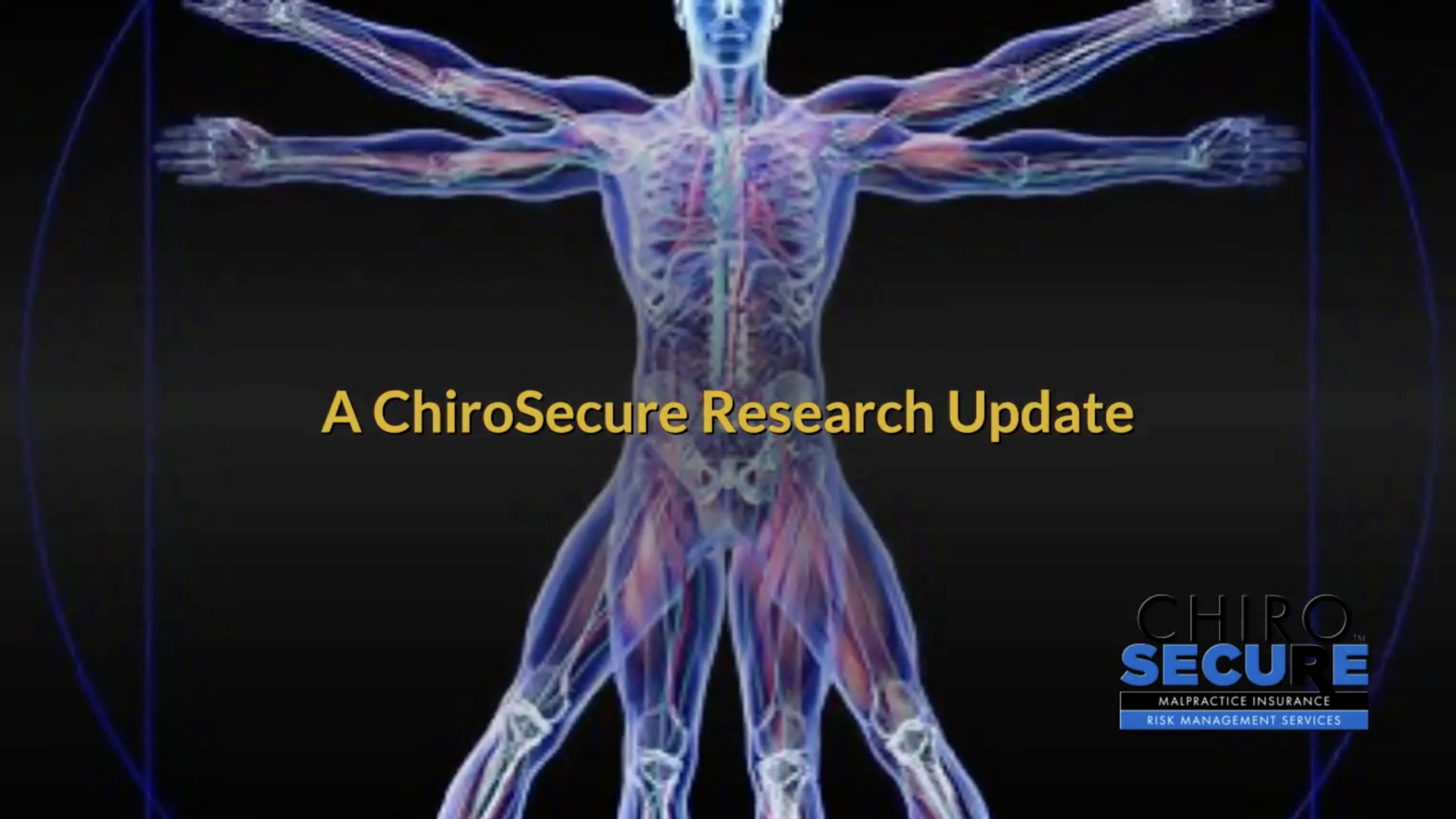Title:
Dose response and efficacy of spinal manipulation for chronic cervicogenic headache
A ChiroSecure Research Update
Abstract:
Systematic reviews of randomized controlled trials suggest that spinal manipulative therapy (SMT) is efficacious for care of cervicogenic headache (CGH). The effect of SMT dose on outcomes has not been studied.
To compare the efficacy of two doses of SMT and two doses of light massage (LM) for 80 patients with chronic CGH.
Discussion:
Participants were randomized to either 8 or 16 treatment sessions with either SMT or a minimal LM control. Patients were treated once or twice per week for 8 weeks. Adjusted mean differences (AMD) between groups were computed using generalized estimating equations for the longitudinal outcomes over all follow-up time points (profile) and using regression modeling for individual time points with baseline characteristics as covariates and with imputed missing data.
For the CGH pain scale, comparisons of 8 and 16 treatment sessions yielded small dose effects: |AMD|</=5.6. There was an advantage for SMT over the control: AMD=-8.1 (95% confidence interval=-13.3 to -2.8) for the profile, -10.3 (-18.5 to -2.1) at 12 weeks, and -9.8 (-18.7 to -1.0) at 24 weeks. For the higher dose patients, the advantage was greater: AMD=-11.9 (-19.3 to -4.6) for the profile, -14.2 (-25.8 to -2.6) at 12 weeks, and -14.4 (-26.9 to -2.0) at 24 weeks. Patients receiving SMT were also more likely to achieve a 50% improvement in pain scale: adjusted odds ratio=3.6 (1.6 to 8.1) for the profile, 3.1 (0.9 to 9.8) at 12 weeks, and 3.1 (0.9 to 10.3) at 24 weeks. Secondary outcomes showed similar trends favoring SMT. For SMT patients, the mean number of CGH was reduced by half.
Conclusion:
Clinically important differences between SMT and a control intervention were observed favoring SMT. Dose effects tended to be small.
Reference:
Haas M, Spegman A, Peterson D, Aickin M, Vavrek D. Dose response and efficacy of spinal manipulation for chronic cervicogenic headache: a pilot randomized controlled trial. Spine J. 2010;10(2):117-128. doi:10.1016/j.spinee.2009.09.002. https://pubmed.ncbi.nlm.nih.gov/19837005/






